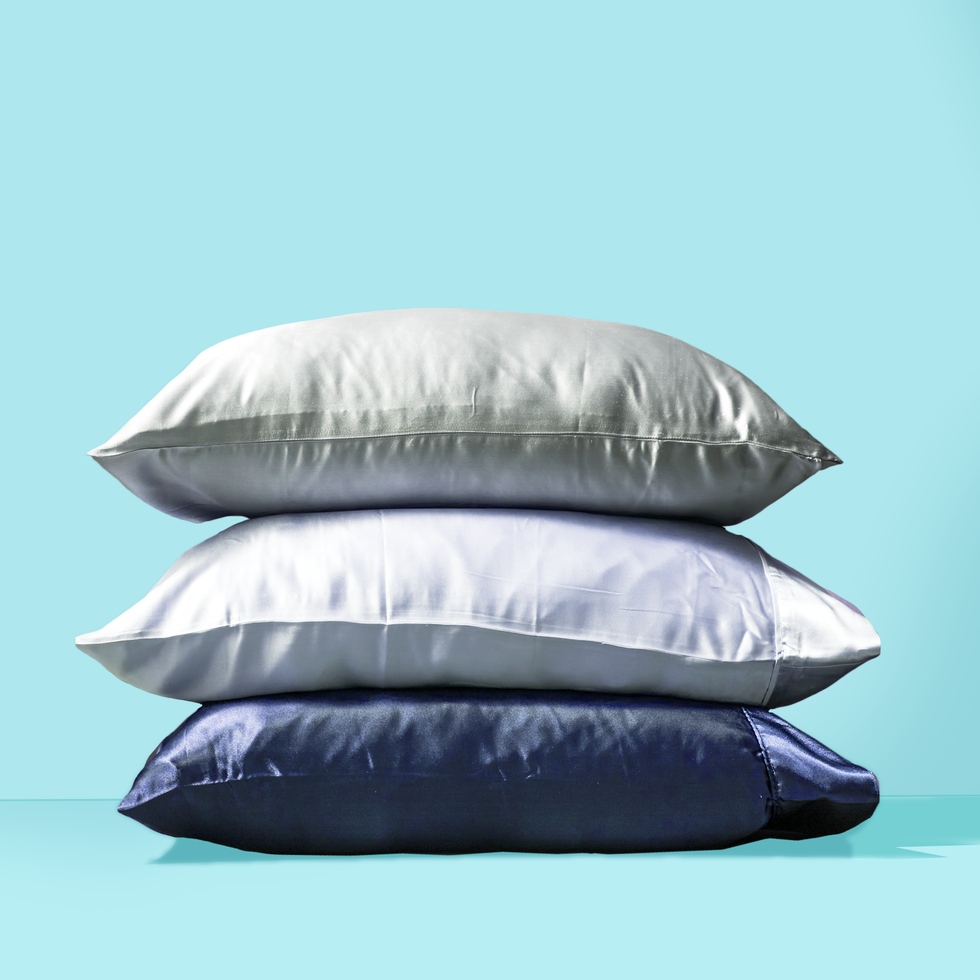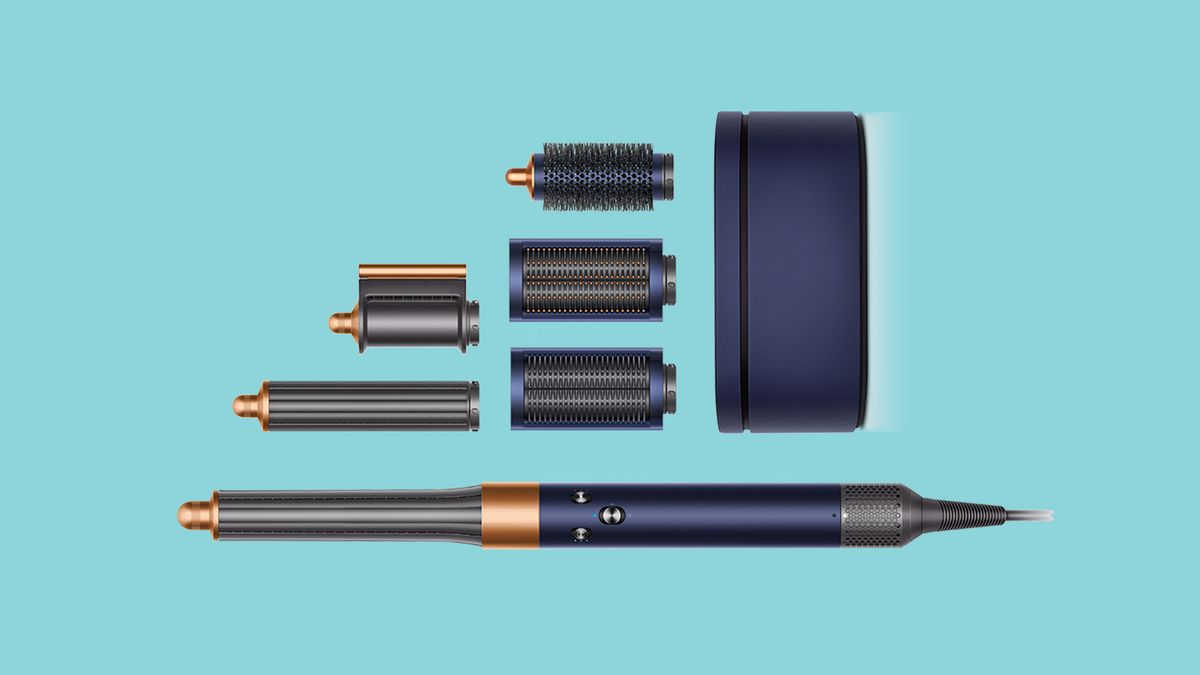[ad_1]
Trying to grow hair longer or get thicker hair can feel like an endless waiting game. While hair is the fastest-growing tissue in the human body, according to the Trichological Society, the average rate of growth is 0.5 to 1.7 centimeters per month or anywhere from about two to eight inches per year. That growth can feel minimal — especially when you’re waiting for it to happen.
It’s normal to shed between 50 and 100 hairs a day, according to the American Academy of Dermatology Association (AAD), but if you think your growth is really stunted, there are certain tweaks you can make to your day-to-day haircare regimen to boost hair growth. You can try using a different hair brush, adjusting how often you use your hair dryer to dial down damage to your hair or adding in hair growth oils and foods to make hair grow quicker to your routine.
These are the secrets and home remedies that grow hair fast, according to top dermatologists, celebrity hairstylists, skincare experts and our own Good Housekeeping Institute Beauty Lab pros.
1. Get frequent trims.
It may seem counterintuitive, but if you want long hair that’s actually healthy, you need to get regular trims. “While haircuts don’t make your hair grow any faster, they get rid of split ends that break your hair,” explains Michael Dueñas, a celebrity hairstylist based in Los Angeles. “Eliminating the breakage gives the appearance that your hair is growing faster.” After all, a split end that breaks can lead to your hair losing length — not to mention shine, volume and smoothness.
2. Eat the right diet.
Having long, strong hair doesn’t just depend on which products you put on your hair; it also depends on what you put into your body. “To promote hair growth, you need to ‘feed’ the hair from the inside,” explains Francesca Fusco, M.D., a dermatologist in NYC. So what foods make hair grow quicker? Those high in protein, the building blocks of hair, including meats and other sources. “Try increasing your protein intake with foods like fish, beans, nuts and whole grains,” she recommends. Even if you’re not a meat lover, you should still aim to maintain a diet high in protein for hair growth. Women who don’t get enough of it often experience “more hair shedding,” Dr. Fusco says.
And steer clear of trendy “cleanses” for a multitude of reasons. “Doing a cleanse is terrible for your hair because you’re depriving your body of nutrients,” Dueñas warns. “After doing a cleanse even for a week, you’ll notice slower hair growth and lackluster locks.”
3. Add a hair-healthy vitamin to your a.m. routine.
If your diet isn’t supplying you with enough nutrition, a supplement could make a world of difference. “Look for a multivitamin that’s formulated and labeled ‘for hair, skin and nails,'” Dr. Fusco suggests. “Those contain important vitamins like biotin and C and B that can support hair health.” Good Housekeeping Institute Nutrition Lab deputy director Stefani Sassos suggests these vitamins and minerals to contribute to healthier hair:
- Vitamin A
- Vitamin C
- Vitamin E
- Zinc
- Iron
- Omega-3 fatty acids
4. Shampoo less and hydrate more.
How often you shampoo your hair does actually impact your hair’s health. “Shampooing your hair [only] two to three times a week allows your natural oils to penetrate your hair, allowing it to hydrate and repair itself,” explains Ken Paves, a celebrity hairstylist in L.A. For thicker and fuller-looking hair fast, choose a shampoo labeled “volumizing” or “thickening.”
Coating your strands in a silky deep conditioner or hair mask or a hair detangler regularly can also help to prevent damage while detangling strands, according to GH Beauty Lab pros. Slather on a store-bought or DIY hair mask from root to tip once a week: One with cinnamon can stimulate blood circulation to encourage stronger, longer hair in no time, says Liana Zingarino, a freelance hair stylist based in New York City.
5. Lay off the bleach.
As chic as platinum hair looks, going from a darker shade to light blonde could stand between you and your longest-possible hair. “When the cuticle of the hair is damaged from bleach, you can have more breakage or split ends,” explains Elizabeth Hiserodt, senior colorist at Cutler Salon in New York City. “The fewer chemical treatments, the better your hair will grow.”
6. Avoid excessive heat styling.
“Stop over-styling your hair,” says Paves. If you must use heat, he recommends decreasing the temperature and always using a heat protectant — otherwise, you risk damaging your hair, leading to breakage and frizz.
7. Brush hair regularly.
Going to bed with unbrushed hair may seem tempting when you’re tired, but giving your hair a few quick strokes can be great for your hair and scalp’s overall health. “Starting at the scalp, use a boar bristle brush to distribute your scalp’s oils evenly onto your hair so it stays naturally moisturized,” recommends Meri Kate O’Connor, celebrity stylist and colorist at Cooper in West Hollywood, CA. Bonus: This simple step each night also helps increase circulation, which helps make your scalp healthier.
8. Keep your showers cooler and focus on scalp care.
A hot shower can dehydrate your skin — and it’s also rough on your hair. “Turn the water temperature down when cleansing,” recommends Paves, and give your scalp a little extra love. Massage with your fingers as you shampoo to deeply de-gunk and help boost circulation.
9. Protect hair from physical damage.
Hair is especially susceptible to breakage when it’s wet, so instead, detangle hair before shampooing. “Water exposure swells and stretches the hair’s shaft, which causes the shingle-like outer layer to lift, and adding stress from brushing in that state can cause it to break,” says Good Housekeeping Institute Beauty Lab senior chemist Sabina Wizemann.
If you have to detangle hair when wet, do it the right way: Apply a top-rated leave-in conditioner from roots to ends and use a gentler wide-tooth comb or detangling brush to reduce friction, working from the ends up in small sections to prevent tearing hair, Wizemann advises.
10. Sleep on a silk pillowcase.
Getting better hair overnight is possible — all you need is to switch up your pillowcase and reap the hair-healthy benefits of silk. “Silk is easier on hair — it helps avoid tangles and breakage,” says Jesleen Ahluwalia, M.D., assistant clinical professor of dermatology at Mount Sinai in NYC. The less breakage your hair experiences, the longer your hair will be. In fact, they’re so good that the Good Housekeeping Institute even conducted an entire study to find the best silk pillowcases.
11. Try using minoxidil.
Pick up a bottle of Women’s Rogaine, recommends GH beauty director April Franzino. “The active ingredient, minoxidil, is FDA-approved and proven to help stop hair loss and promote hair regrowth with continued use according to packaging instructions.” For a more targeted solution, pick up Hers 2% Minoxidil Topical Solution and use the dropper applicator to focus on more specific problem areas.
But be wary of shampoos that claim to grow hair — hair growth from shampoo “has yet to be scientifically proven, at least in published research or to FDA’s standards,” says Jeni Thomas, Ph.D., principal scientist at Proctor & Gamble Beauty.
When to talk to your doctor about hair loss
Underlying causes of hair loss may be contributing to your hair’s slow (or lack of) growth. It’s estimated that more than 50% of women will experience noticeable hair loss, according to Cleveland Clinic — and that doesn’t count those born with wispy or sparse strands. “Hair that’s naturally thin in diameter [fine] or sparse is genetic,” says Joyce Davis, M.D., dermatologist in NYC. “Hair loss is often hereditary (or androgenic) thinning, which tends to be patchy.” Another common type of hair loss is telogen effluvium (TE), or allover shedding due to hormones or health issues such as thyroid or autoimmune disease and anemia.
With TE, hair generally grows back once the problem is treated; see a doctor for diagnosis. For androgenic loss, the over-the-counter topical minoxidil mentioned above is proven to grow hair with continued use. For all types, the professional treatment PRP (platelet-rich plasma) stimulates growth with scalp injections of your blood’s growth factors, Dr. Davis says. Consult a dermatologist to find out if it’s right for you.
Meet the experts
- Jesleen Ahluwalia, M.D., assistant clinical professor of dermatology at Mount Sinai in NYC.
- Joyce Davis, M.D., a board certified dermatologist and dermatologic surgeon in NYC.
- Michael Dueñas, a celebrity hairstylist based in Los Angeles.
- Francesca Fusco, M.D., assistant clinical professor of dermatology at Mount Sinai in NYC.
- Elizabeth Hiserodt, senior colorist at Cutler Salon in New York City.
- Meri Kate O’Connor, celebrity stylist and colorist at Cooper in West Hollywood, CA.
- Ken Paves, a celebrity hairstylist in L.A.
- Jeni Thomas, Ph.D., principal scientist at Proctor & Gamble Beauty.
- Sabina Wizemann, Good Housekeeping Institute Beauty Lab senior chemist.
- Liana Zingarino, a freelance hair stylist based in New York City.
Pia is a beauty and fashion editor with a decade of experience at publications including Hello Giggles, InStyle, Real Simple, Good Housekeeping, Woman’s Day, Prevention, People en Español and HELLO!/HOLA! She has also written for People, Elite Daily and Bustle. She received a B.A. in creative writing from NYU and a Master of Science at Columbia’s journalism school. She is based in New York City.
[ad_2]
Source link



